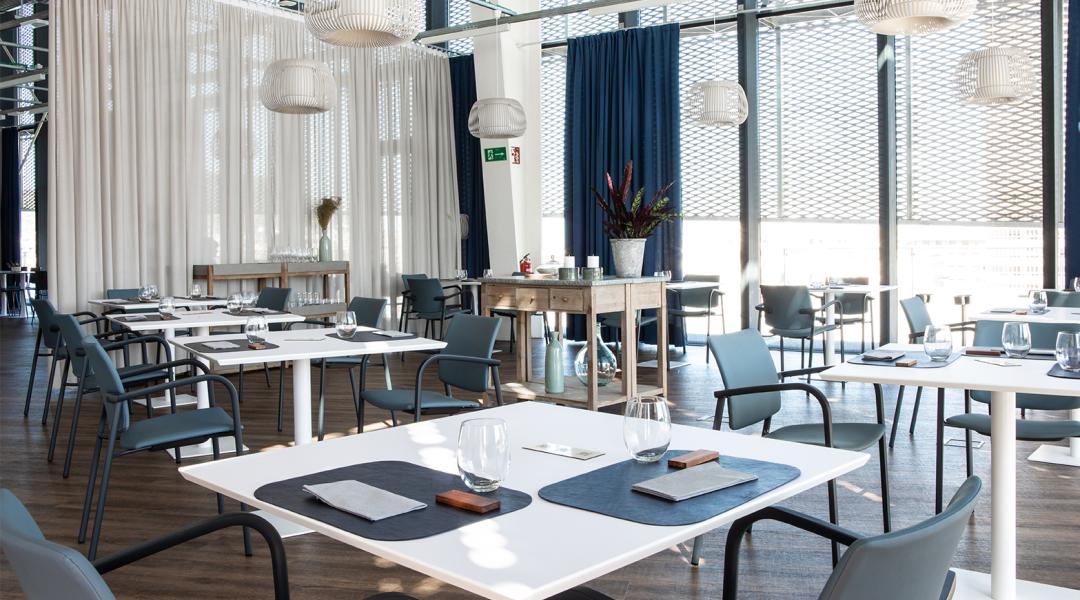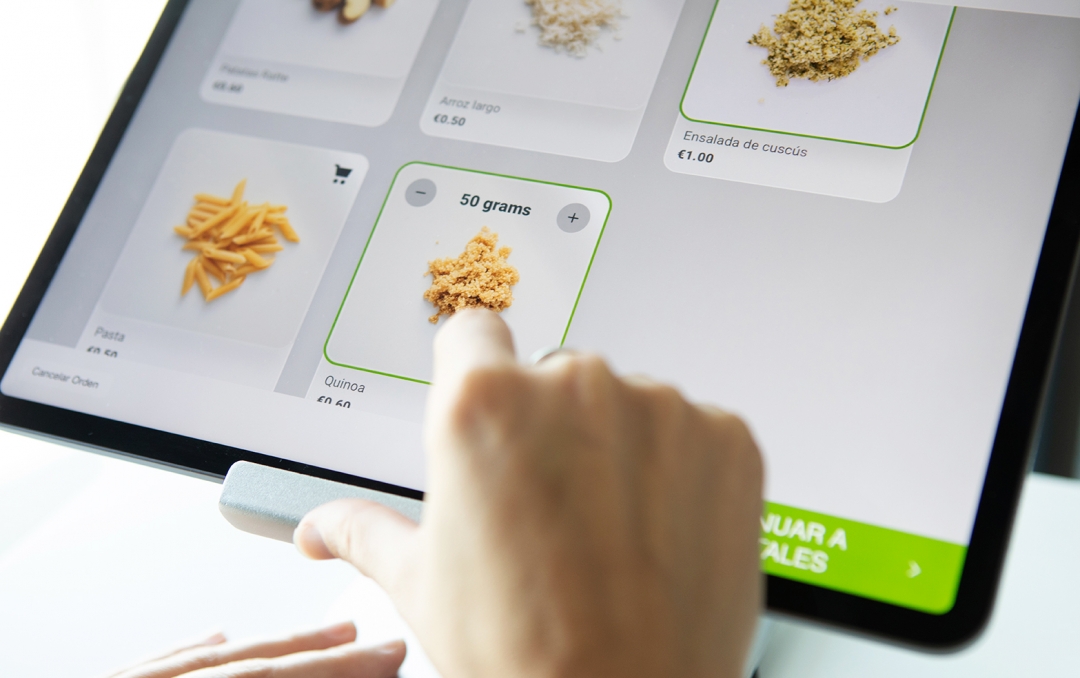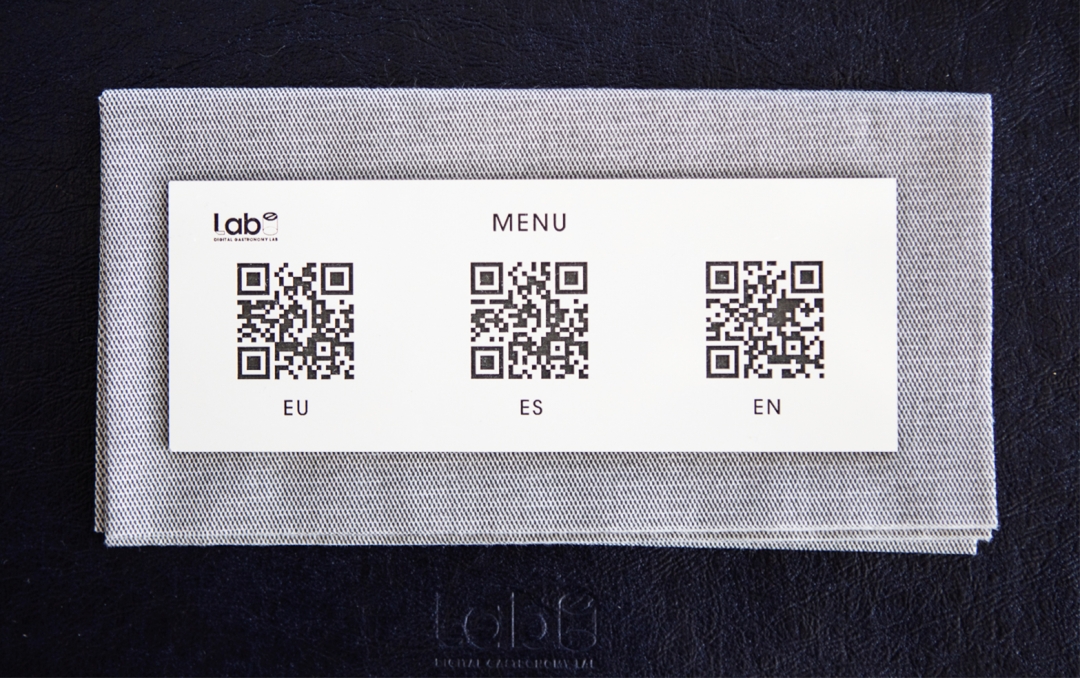LABe
The Future of Gastronomy Is Tested Here

This isn’t a restaurant. They feed you, there’s a menu, tables, cutlery, kitchen and wine, but this isn’t a restaurant. Its name says it all (LABe, Digital Gastronomy Lab) and the Basque Culinary Center, the entity responsible for this pioneering project ‘testing’ new gastronomy, is quick to remind us of this.
LABe opened its doors last summer at the top of Tabakalera. This is San Sebastian’s cultural space that has become the centre of this more modern Donostia, proof that the latest trends are fully compatible with walks along La Concha in your Sunday best, surfing in La Zurriola or one of the largest concentrations of Michelin Stars per square metre in the world. To name a few of the most typical clichés when talking about a city that has always considered itself beautiful but has understood that it’s not enough.
El Basque, which is how everyone calls it around these parts, and the great potential that it has developed since its inception is possibly the finest example of this. Stars come and go, but a gastronomic university of this calibre puts you on the map come what may. But let’s get back to LABe, the “non-restaurant” where we can eat both an inexpensive daily special during the week and also a tasting menu. If this isn’t a restaurant, what is it? An “Open Innovation Living Lab” according to the official website.
When Ruben Baldomir, one of those responsible for the project, sees us raising our eyebrows at this vague description, he puts it in layman’s terms: “It’s a gastronomic space for testing”. It’s true that this isn’t a very catchy slogan, but it does explain quite well the idea that it’s a place where what we eat and how we order is part of an experiment. A test that, in a way, will determine how restaurants might be in the not-too-distant future. However, those who come here expecting to see robots or the like might be disappointed. Or sink into restaurant reality. Like in many other laboratories, reality is quite a bit more common and practical.
Personalisation on a plate
In the case of LABe, one of their star projects is the ultimate personalisation system of the daily special. A formula that costs between 8 and 10 Euros where the diner has to define their order through a tablet given to them upon arrival, which allows them to choose the amount of each ingredient through a step-by-step system where the client chooses the base, protein or sides.
“LABe is a place where what we eat and how we order is part of an experiment. A test that will determine how restaurants might be in the not-too-distant future”
Each ingredient and weight not only make up the menu that day made by the clients themselves, but this data also contributes to managing the kitchen and orders through a comprehensive system that promises to make life easier for the cooks and people responsible for shipments and orders. It allows them to precisely know how much chicken or how many tomatoes are served each week. And not only that, it also allows them to know the time at which a certain ingredient is ordered the most, or what day of the week people order more fish or quinoa salad.
The project is backed by Vitamojo, a London restaurant that already operates with this peculiar system that has been tested for a few months in San Sebastian. Whether it ends up being used in more Spanish restaurants or even becomes the norm for fast-food and healthy establishments in the years to come, which is the menu’s approach, will greatly depend on the experience at LABe.

Through a tablet, the diner can make up their menu and choose the amounts of each ingredient. © Courtesy of LABe
They follow the same testing approach with other new ideas they have, such as software to control the breakdown of pricing for each dish or the development of new specific machinery that is also being tested and developed at LABe’s kitchens, but Baldomir explains that these details can’t be revealed just yet. He was also a student at the Basque Culinary Center, the same as the others. This, the staff’s youth and the use of a language more often spoken by entrepreneurs than cooks are traits that are common throughout the team. Something that, on second thought, perfectly matches the space, which, on its upper floor, houses a co-working space with 30 spots where start-ups can take their first steps in an environment that combines gastronomy and innovation, which is rare.
This is what LABe’s about. An “innovation and digital transformation laboratory for future gastronomy”, according to another of the many descriptions available for the visitor set on putting a label on the place. They also identify as “an open innovation space where future gastronomy can be reconsidered and co-created in digital terms”. “But, is there a normal menu?”, ask those who are curious enough to go there for lunch or dinner (Fridays and weekends) but are not sure about the whole idea of choosing how many grams of cereals you want on your futuristic plate through an iPad. There is indeed a menu, as well as an executive lunch menu costing 18 Euros during the week and a tasting menu consisting of five dishes for 30 Euros, plus drinks.
An immersive experience
Defining the type of cooking made here seems easier than describing the nature of a unique space. “Cuisine vivante”, is the French concept that LABe uses to explain their gastronomic philosophy. That is, natural, healthy, local and seasonal food, where vegetables are the main ingredient. Although it’s not exclusively vegetarian; carnivores, there’s no need to be afraid.
In the land of cider and steaks, this is also a bold and visionary stance because, at least on paper, here they not only test future cooking or management methods, but they also play with ingredients and flavours that hope to become the norm in a few years. By the way, the menu is also on a tablet and they only accept payment by card.

LABe restaurant menu in QR codes. © Courtesy of LABe
There are no robots and none are expected, although you never know. But the so-called experimental room provides the futuristic gastronomic experience that many expect to see in a place like this. It is a round room for only 10 diners with 360º projectors that turn the walls into whatever you want through mapping. It even has a scent emission system to transport the diner to the beach or the mountains and make the experience even more immersive.
“The experimental room has a scent emission system to transport the diner to the beach or the mountains and make the experience even more immersive”
It’s true that there are already restaurants that play with this in a big way. As it happens, Sublimotion in Ibiza wholeheartedly endorses this idea. It’s the most expensive restaurant in the world, so they can afford all the projectors and technology displays that they want. It’s hard to imagine something similar in modest Donosti and in a place like LABe. In fact, it’s a space that is still being defined but that, beyond being used for gastronomic experiences, it will also be used as a laboratory to measure diners’ reactions to food in different environments and circumstances.
Do you eat more or less with this or that light? How does scent affect appetite for a certain dish or ingredient? Indeed, this isn’t a gastropub, but a place that lets you take a peek at what future restaurants will be like.



